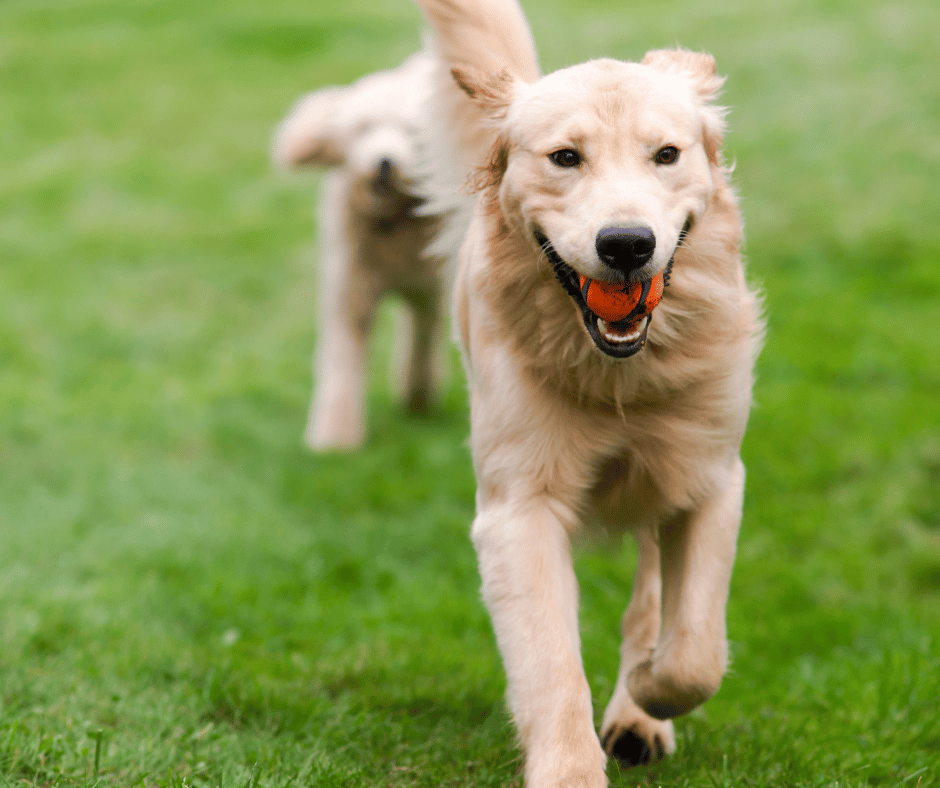As a pet owner, one of the most rewarding aspects of having a dog is developing a deep bond with your furry companion. However, to truly understand and communicate with your dog, it's essential to understand their behavior. Dogs have a unique way of expressing themselves, and being able to interpret their actions and signals can significantly enhance your relationship. In this blog, we'll delve into some common dog behaviors and what they might mean, helping you to better understand what your dog is trying to tell you.
1. Tail Wagging
Tail wagging is one of the most recognizable dog behaviors, but it can have different meanings depending on the context. A wagging tail usually indicates excitement or happiness, but the speed and position of the wag can provide more information:
- Fast wagging with a loose, relaxed body: Your dog is happy and excited.
- Slow wagging with a stiff body: Your dog might be feeling uncertain or insecure.
- Tail held high and wagging slowly: Your dog is confident and alert.
- Tail tucked between the legs: Your dog is scared, anxious, or submissive.
Understanding the nuances of tail wagging can help you gauge your dog's emotional state and respond appropriately.
2. Barking
Barking is a natural form of communication for dogs, and it can have various meanings:
- Excited barking: Short, high-pitched barks often indicate excitement or playfulness.
- Alert barking: A series of sharp, rapid barks usually means your dog is alerting you to something unusual.
- Fearful barking: Lower-pitched barks combined with growling might indicate fear or aggression.
- Attention-seeking barking: Persistent, repetitive barking can be your dog's way of asking for attention or indicating boredom.
By paying attention to the context and pitch of your dog's barks, you can better understand what they are trying to communicate.
3. Licking
Dogs lick for a variety of reasons, and it's often a sign of affection or submission. However, excessive licking can also indicate other things:
- Affectionate licking: Dogs often lick their owners or other dogs as a sign of affection.
- Grooming: Dogs lick themselves to groom and keep clean.
- Anxiety or stress: Excessive licking, especially of themselves, can indicate anxiety or stress.
- Health issues: Persistent licking of a particular area might indicate an underlying health problem, such as allergies or infections.
If your dog is licking excessively, it's essential to monitor their behavior and consult with a veterinarian if necessary.
4. Ears
A dog's ears are incredibly expressive and can provide a lot of information about their mood:
- Ears up and forward: Your dog is alert and interested in something.
- Ears back and flat against the head: Your dog is feeling scared, anxious, or submissive.
- Ears relaxed: Your dog is calm and content.
- One ear up, one ear down: Your dog might be feeling curious or confused.
Observing your dog's ears, along with other body language, can help you understand their emotional state.
5. Body Posture
A dog's overall body posture can convey a lot about their feelings and intentions:
- Relaxed posture: A relaxed, loose body indicates that your dog is comfortable and at ease.
- Stiff posture: A stiff, rigid body can indicate tension, aggression, or fear.
- Play bow: When a dog lowers their front legs and keeps their rear end up, they are inviting you or another dog to play.
- Cowering: A dog that is cowering with their body low to the ground is feeling scared or submissive.
By observing your dog's body posture, you can get a clearer picture of their emotional state and how to respond.
6. Eyes
A dog's eyes are very expressive and can provide clues about their emotions:
- Soft, relaxed eyes: Your dog is calm and content.
- Wide eyes with visible whites (whale eye): Your dog is feeling anxious, scared, or threatened.
- Squinting or blinking: This can indicate relaxation, but it can also be a sign of discomfort or pain if persistent.
Understanding your dog's eye expressions can help you respond to their needs and ensure their comfort.
7. Yawning
While yawning is often associated with tiredness, in dogs, it can have other meanings:
- Stress or anxiety: Dogs often yawn when they are feeling stressed or anxious.
- Calming signal: Dogs might yawn to calm themselves or other dogs in a stressful situation.
- Tiredness: Just like humans, dogs yawn when they are tired or bored.
If your dog is yawning frequently, consider the context and whether they might be feeling stressed or anxious.
8. Digging
Digging is a natural behavior for dogs, but it can have different motivations:
- Boredom: Dogs might dig to entertain themselves if they are bored.
- Hunting instinct: Some dogs dig to hunt for small animals.
- Comfort: Dogs might dig to create a comfortable spot to lie down, especially in hot weather.
- Anxiety: Dogs might dig as a way to relieve stress or anxiety.
Providing your dog with appropriate outlets for their energy and ensuring they feel secure can help reduce unwanted digging.
Conclusion
Understanding your dog's behavior is key to building a strong and trusting relationship. By paying attention to their body language, vocalizations, and actions, you can gain valuable insights into their emotional state and needs. Responding appropriately to your dog's signals can help create a harmonious and happy environment for both of you.
For more tips on caring for your pet and addressing their needs, check out our range of pet care products on Pet-FX. Our Advanced Moisturizing Shampoo and OdorOut Spray are designed to keep pet pal healthy and happy.



